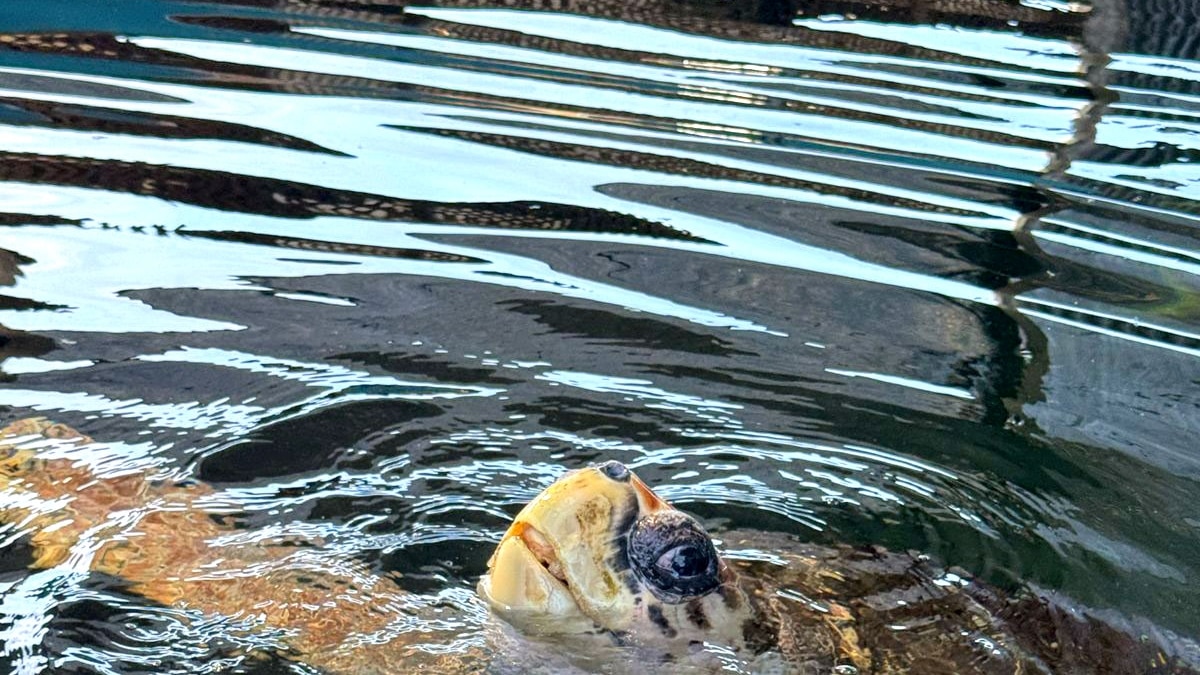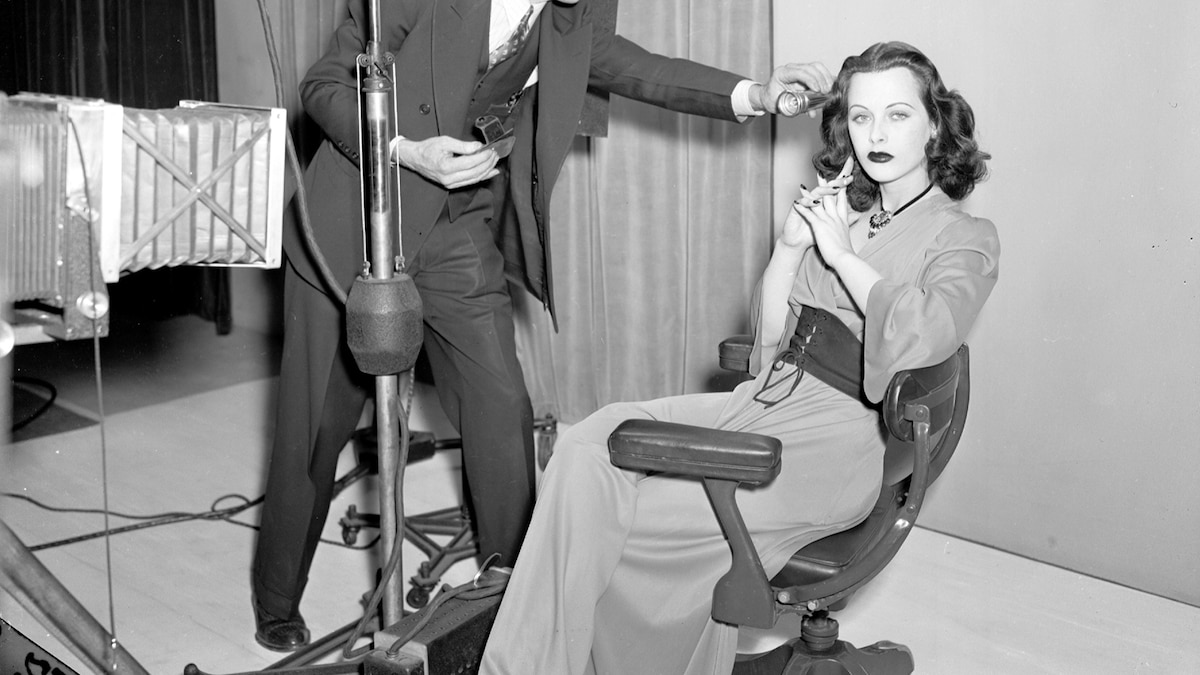Now Reading: After 41 years in captivity, this celebrity sea turtle is finally swimming home
-
01
After 41 years in captivity, this celebrity sea turtle is finally swimming home
After 41 years in captivity, this celebrity sea turtle is finally swimming home

The waves were rough on the morning of April 11, but Jorge didn’t hesitate. With steady strokes, the 220-pound sea turtle dove into the Atlantic Ocean—his first swim in open water in 40 years.
After spending more than half his life in a shallow aquarium tank in Mendoza, Argentina, hundreds of miles away from the ocean, Jorge is doing what once seemed impossible: He has relearned his natural instincts as he makes his way to the warm waters of Praia do Forte in northern Brazil—the place he once called home.
Watching Jorge’s remarkable journey from afar is Mariela Dassis, a researcher at the National University of Mar del Plata who is in charge of his satellite monitoring. Dassis is overseeing the final phase of a meticulous three-year re-education and release project developed by several Argentine institutions to prepare Jorge, rescued as a juvenile in 1984, for life back in the wild. Jorge holds the record for the longest time spent in captivity of any sea turtle in the world.
The first night, Dassis barely slept, anxiously waiting for Jorge to emit a signal. Now, more than 70 days into his oceanic voyage, she feels calmer because Jorge has already traveled over 1,700 miles and has less than 760 miles left to reach his destination—proving himself a true master of resilience.
(Sea turtles are surviving—despite us.)
Relearning the ocean life
At 60 years old, Jorge, a loggerhead turtle (Caretta caretta), weighs about 220 pounds. He’s spent more than half his life in a 5,300-gallon pool barely 1.5 feet deep, living on hard-boiled eggs and beef in water that was salted to simulate the ocean he lost when he was accidentally captured in 1984. That year, a group of fishermen found him entangled in fishing nets, injured, and cool-stunned in Bahía Blanca, a port city in the province of Buenos Aires and a frequent stopover for his species along the migratory route.
(Meet the dog who can find rare sea turtle nests at a shocking success rate.)
At the time, sea turtle rehabilitation and reintroduction were not common practice, so Jorge was put in a wooden box and flown to the Andes. In Mendoza, he became a celebrity: Families went to see him at the aquarium for decades, and even mayors handed over the responsibility of caring for him to their successors as they began their terms in office. Pressure to return him to the sea grew so intense that more than 60,000 people signed a petition for his release, and a group of environmental lawyers eventually filed a lawsuit in 2021.

Jorge in his first enclosure shortly after arriving in Mendoza in 1984. He was caught in fishing nets earlier that year by a group of fishermen.
Photograph Courtesy of the Municipality of Mendoza City
The Mendoza Municipality took up the challenge of preparing Jorge for a return to the ocean, enlisting researchers from the Mar del Plata Aquarium, the Argentine Museum of Natural Sciences, and the Institute of Marine and Coastal Research at the National University of Mar del Plata. Together, they set a goal: to get Jorge swimming freely again. But could he survive the attempt?
Helping Jorge recover his natural instincts
During those decades in captivity, Jorge’s natural survival instincts faded, leaving him unfamiliar with hunting live prey or reacting to ocean currents—a dangerous handicap for any wild sea turtle.
“In three years, we managed to get him to recover the instinct he had almost lost,” explains marine biologist Alejandro Saubidet, who led Jorge’s re-education—a rehabilitation that typically lasts a year and is designed for turtles that reach the coast with an injury or after ingesting plastic. “We had to see if it was feasible to return him to the environment.”
The first step was to re-adapt him to saltwater. Over several months, the salinity of the pool he lived in was gradually increased until it reached 3.3%, which is the equivalent to the salinity that loggerhead turtles can tolerate in their natural habitat. Blood tests accompanied this process to determine how well Jorge could excrete the salt; x-rays were also taken to assess the health of his joints.
Once Jorge passed these tests, he boarded his second plane and flew to Mar del Plata, where a more comfortable pool awaited him, filled with seawater and kept at a controlled temperature between 68°F and 75°F. This temperature range was chosen to closely match the conditions he would encounter in the Atlantic Ocean during his first few months at sea.
The pool held 40,000 gallons of water and was 10 feet deep. The amount of water was gradually increased to make sure Jorge would be able to reach the surface to breathe.
Throughout the process, Jorge’s diet also changed: Hard-boiled eggs and beef were replaced with live food, such as crabs and snails, which the turtle had to hunt. According to Saubidet, this wasn’t easy.
You May Also Like
“Little by little, we taught him to chase after prey,” he says. Other animals were later added to the pool to compete with him for food. “The first time we threw in a ray, Jorge thought it was food and went after it, but when he saw it move, he got scared,” notes Saubidet.
Over time, Jorge became a skilled hunter, started making more sounds, and even built shelters—just like loggerhead turtles do in the wild to rest, hide from predators, and protect themselves from currents. The researchers even created currents in the pool that Jorge became accustomed to.
All of these behaviors indicated that Jorge was returning to his natural state, and each challenge he overcame prepared him for the great adventure that awaited him at sea.

Jorge being released into the Atlantic Ocean on April 11. He’s expected to travel about 2,500 miles to northern Brazil.
Photograph By Mauro V. Rizzi / La Nación
A beacon of hope for conservation
Although it was already autumn, the water was still warm enough on April 11 for Jorge to orient himself and catch the current that would carry him to Brazil, his final destination—that is, unless he decides to settle somewhere else along the route.
He left the aquarium with a rangefinder attached to his shell, boarded a ship belonging to the Argentine Naval Prefecture, and sailed 15 nautical miles into the Atlantic Ocean, where he finally touched the ocean for the first time in four decades.
As fate would have it, it was a day of rough seas, and Dassis endured the anguish of not knowing anything about Jorge’s whereabouts until 10 a.m. the next day, when the rangefinder emitted its first signal from offshore. Jorge was heading in the right direction: north, toward Brazil.
“The most beautiful thing of all is that Jorge shows us reintegration is possible,” says Dassis. “Nature can find its place again.”
Since his initial release, Jorge has sent at least two signals a day, with an accuracy ranging from 500 to 3,300 feet. From this, researchers learned that in the first month, Jorge “stepped on the gas” to cross the coast of Uruguay and enter Brazil, slowing down once he reached warmer waters. He’s now swimming off the coast of Santa Catarina State.
Laura Prosdocimi, a researcher at the Laboratory of Ecology, Conservation, and Marine Mammals at the Argentine Museum of Natural Sciences—who conducted the genetic studies that revealed Jorge’s origin from a population of turtles in Praia do Forte—believes Jorge is returning to the nesting areas he knew as a hatchling and juvenile, just like adult specimens do. “When Jorge entered captivity as a subadult, he already had much of the information about migratory routes,” she explains.
The rangefinder is expected to keep working for at least another four months. By the time the battery dies, researchers will have gathered completely unprecedented information, as science has very little data on the movement patterns of male sea turtles, particularly of this species.
“Jorge is a unique case in the world,” says Prosdocimi, noting that there are no records of another animal that spent so many year in captivity and then adapted so well to life in the wild.
“He’s already overcome the greatest challenges,” says Dassis. “And since he’s still of reproductive age—Caretta carettas live to around 80, but they can reach 100—maybe we’ll see some Jorgitos and Jorgitas.”























